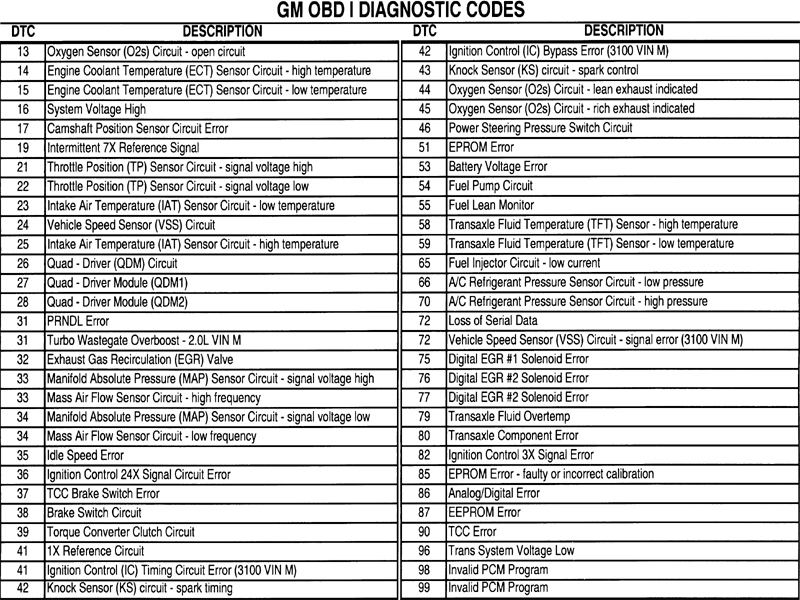Decoding the Mystery: How to Reset Your Check Engine Light
That dreaded yellow glow on your dashboard – the check engine light – can send shivers down any driver's spine. It's a universal symbol of car trouble, often accompanied by a sinking feeling in your wallet. But before you panic, take a deep breath. Understanding how to interpret and reset these engine light codes can save you time, money, and unnecessary stress.
Engine light codes, also known as Diagnostic Trouble Codes (DTCs), are your car's way of communicating a problem. They're like secret messages from your vehicle's onboard computer, telling you something isn't quite right. From a loose gas cap to a more serious engine malfunction, these codes provide clues to help pinpoint the issue. Learning to decipher these codes can empower you to address the problem head-on, whether it's a simple DIY fix or a trip to your trusted mechanic.
The history of engine light codes dates back to the late 1970s and early 1980s, with the introduction of onboard diagnostics (OBD) systems. Early systems were relatively basic, but they paved the way for the more sophisticated OBD-II systems we use today. Standardized in 1996 in the United States, OBD-II provides a common language for all vehicles, making diagnostics much easier. The ability to erase engine light codes became a crucial part of this system, allowing mechanics and car owners to reset the light after repairs and verify that the problem has been resolved. Ignoring these codes is like ignoring a warning siren; it could lead to more extensive and costly damage down the road.
Understanding the meaning behind engine light codes is crucial. These codes are typically formatted as a letter followed by four numbers. For example, a "P" code indicates a powertrain issue, while a "B" code refers to a body problem. Each code corresponds to a specific malfunction, such as a faulty oxygen sensor (P0135) or a problem with the evaporative emission system (P0440). By learning how to retrieve these codes using an OBD-II scanner, you can gain valuable insight into your car's health.
One of the most common methods for retrieving and clearing engine light codes is by using an OBD-II scanner. These inexpensive devices plug into your car's OBD-II port (usually located under the dashboard) and allow you to read and clear the codes. However, simply clearing the codes without addressing the underlying issue is like putting a band-aid on a broken bone. It's essential to diagnose and fix the problem to prevent further damage and ensure your car is running smoothly.
Several benefits come with clearing engine light codes correctly: verifying repairs, resetting the diagnostic system, and peace of mind. For example, after replacing a faulty oxygen sensor, clearing the corresponding code confirms the fix was successful. Resetting the system allows it to monitor for new issues, and having a clean dashboard provides that much-needed peace of mind.
Advantages and Disadvantages of Clearing Engine Light Codes
| Advantages | Disadvantages |
|---|---|
| Verify Repairs | Masks Underlying Problems if not fixed |
| Reset Diagnostic System | Could void warranty if done improperly |
| Peace of Mind | May delay necessary repairs |
Step-by-step guide to clearing codes with an OBD-II scanner:
1. Locate the OBD-II port.
2. Plug in the scanner.
3. Turn the ignition to the "on" position (don't start the engine).
4. Follow the scanner's prompts to read the codes.
5. Select the option to clear the codes.
Frequently Asked Questions:
1. What does it mean when the check engine light flashes? A flashing light indicates a serious issue requiring immediate attention.
2. Can I drive with the check engine light on? While possible, it's best to diagnose and fix the issue as soon as possible.
3. Will disconnecting the battery clear the codes? Yes, but it's a temporary fix and doesn't address the underlying problem.
4. How much does an OBD-II scanner cost? They range from $20 to $100+.
5. Where can I find the meaning of engine light codes? Online resources and repair manuals provide detailed code definitions.
6. Is it illegal to drive with the check engine light on? It depends on the specific issue and local regulations.
7. Can I clear the codes myself? Yes, using an OBD-II scanner.
8. How often should I check my engine light codes? Periodically, or whenever the light illuminates.
Tips and Tricks
Keep a record of your engine light codes and their corresponding fixes. This history can be valuable for future diagnostics. Consider investing in a higher-end OBD-II scanner with advanced features like live data streaming.
In conclusion, understanding and managing engine light codes is a fundamental aspect of car ownership. While seeing that yellow light can be unsettling, it doesn't have to be a cause for panic. By learning to interpret these codes and using the right tools, like an OBD-II scanner, you can take control of your car's health and potentially save yourself from expensive repairs. Clearing engine light codes is a powerful tool when used responsibly, but remember, it's only a temporary fix if the underlying problem isn't addressed. Take action today, empower yourself with knowledge, and keep your car running smoothly for years to come. Don't let the mystery of the check engine light keep you in the dark. Shine a light on your car troubles and hit the road with confidence. Regularly checking for and addressing engine light codes is a small investment that can pay off big in the long run, preventing major headaches and keeping your car on the road. So, grab an OBD-II scanner, decode those secret messages, and take charge of your vehicle's well-being.
Finding peace understanding the post tashahhud supplications
Keep your boat charged the power of solar trickle chargers
The obsessive world of realistic anime pencil drawings










